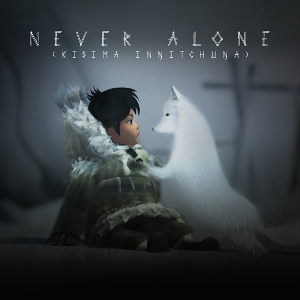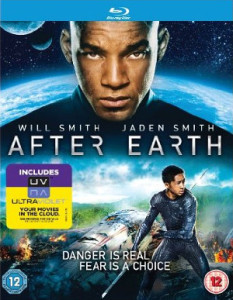 Alternate Titles: Marvel’s Agent Carter
Alternate Titles: Marvel’s Agent Carter
Genre: Superhero / Television Series
Main Cast: Hayley Atwell; James D’Arcy; Chad Michael Murray; Enver Gjokaj; Shea Whigham
First Shown: 6th January, 2015
Available: Amazon.com | Amazon UK
** This is a full season review, so will discuss some scenes from later in the series. It will not reveal the major plot twists. Please don’t post information about season two in the comments. I’ve not seen it yet. **
Agent Carter tells the story of Peggy Carter’s (Hayley Atwell) life after the war. She works for the SSR, but is constantly undervalued for being a woman. They’re more interested in having her take the lunch orders than doing secret agent stuff. When Howard Stark’s (Dominic Cooper) vault is raided, and his dangerous inventions end up on the black market, he contacts her to clear his name. Part of the deal is assistance from his butler, Edwin Jarvis (James D’Arcy).
One unusual thing with this series is we know where it ends. Peggy will found SHIELD and survive into old age. Howard will eventually become the father of Tony Stark. Jarvis will live long enough to inspire Tony, and be immortalised as the A.I. Jarvis. This is the story of how everyone gets there.
I enjoyed how the story progressed. Each episode tackles a new part of the overall plot, with plenty of twists and turns. The short season meant there was no filler or waiting on the movies to reach a certain point (an issue Agents of SHIELD is prone to having). What makes it though is the relationship that develops between Peggy and Jarvis – one of friendship and mutual respect. I’m down for watching them solving mysteries together.
Peggy losing Steve is also tackled head on. She’s grieving the loss of the man, while society only sees Captain America. One reminder of this is a radio show, where her role is taken by Betty Carver, a damsel in distress. As well as being salt on her wounds, this show highlights how history was often rewritten to exclude the women who were part of it. The secret agent becomes a nurse, who is there to mend socks and get kidnapped.
A large part of the conflict for Peggy is getting things done in a society that’s sure she’s incapable of doing so. It’s why she ends up going behind the back of her colleagues, as she knows they’ll neither believe her, nor be willing to look at theories outside of Howard selling his own inventions. Roger Dooley (Shea Whigham) is trying to protect her. Jack Thompson (Chad Michael Murray) is the typical women-don’t-belong-here sexist. Daniel Sousa (Enver Gjokaj) is the best of the bunch in many ways, but still idolises her in a way that a real person can’t live up to.
It’d be easy to show Peggy as the single exceptional woman, but that’s not how it goes down. One of my favourite moments is when the women she lives with are explaining the elaborate ways they smuggle food out of the buffet. They don’t lack ingenuity. They lack opportunity.
It also touches on disability issues. Daniel is a war veteran with a leg injury, who walks with a crunch. He’s been told his survival is an inconvenience. When someone notices his developing feelings for Peggy, he’s told she’d never date a guy with a crutch. Daniel also stands out among his colleagues as not being the classic Northern European guy (the actor is Albanian-American).
The dynamic between Daniel and Peggy is interesting, as they’re each marginalised in different ways. They use that to empathise with each other. They don’t always get it right, but it gives them a starting point to try.
Around the time I was watching, there was yet another example of a romance book where a Jewish woman falls in love with a Nazi, then converts to Christianity. There seem to have been a string of them recently. Some authors are very determined to romanticise Nazis and sweep all of the atrocities under the rug as not being that bad. One comment on this is why the non-Jewish love interest has to be a Nazi, rather than one of the many people who actively opposed them.
So I was very interested to find out that Jarvis was married to Ana, a Jewish woman. This is one of those stories about a person who opposed the Nazis doing what he can to get the woman he loves out of Europe, and to safety. I also liked that when Peggy refers to Ana being Jewish in past tense, Jarvis corrects her. She hasn’t stopped being Jewish.
What I didn’t like so much is we don’t get to meet her. This was a golden opportunity to have a positive on-screen Jewish character, and it didn’t happen. Though I can see why Jarvis would try to keep her out of things, this wouldn’t have prevented there being a scene where he made up some vague excuse and she was suspicious, or something on those lines.
It’s also very noticeable that black characters aren’t in main roles. Though I’d be happy to see more non-white people in general, I really wanted to see anti-black racism addressed given the setting and time. For a series that handles other issues of marginalisation, this is one that’s glaring in its absence.
Despite those areas where I would have liked more, I enjoyed the season as a whole. It tackles a number of difficult issues, as well as having a fun action mystery plot. I’ve always rather liked stories that handle being non-superpowered in a world with superheroes, so in many ways, I like it better than the movies it came from.


 ** The review contains some mild spoilers, but not the major twists or ending **
** The review contains some mild spoilers, but not the major twists or ending **
